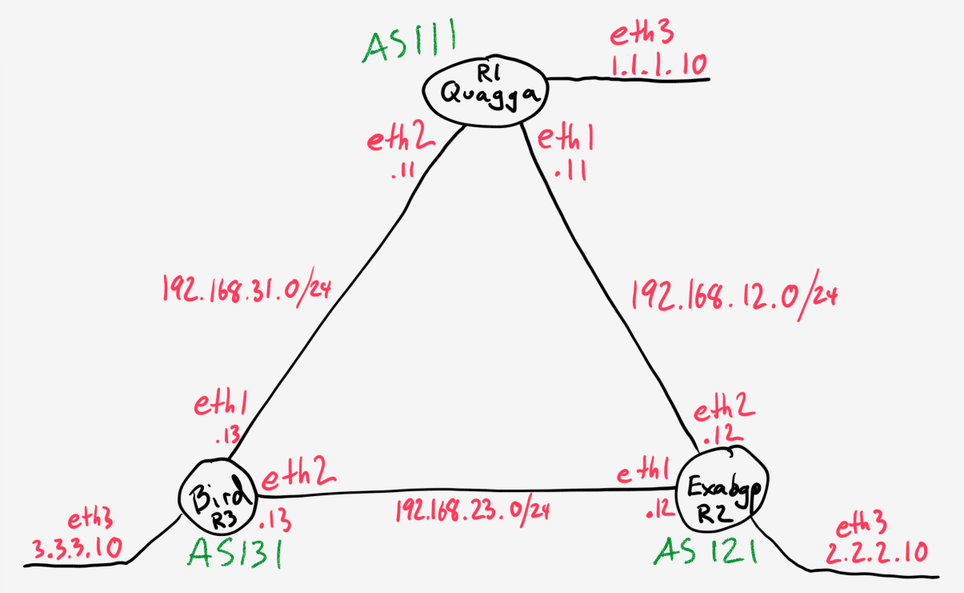A Look Back at ONUG NYC 2015

I had a great time at the Open Networking Users Group meeting in NYC last month. Shortly afterward, I took a moment to think back on what I’d seen there, and that post was published on Gestalit.com. I won’t reproduce it here, so please take a moment to read my post at the source (gestaltit.com) and let me know what you think (here or there; either is fine). Topics covered include:
- Containerized microservices
- Software Defined WAN
- Cross-functional teams
- Adoption rates of new technologies
ONUG covered some cool stuff; I hope you enjoy the post.
Disclosure
My post at GestaltIT is a sponsored post as part of the ONUG Spring 2015 Tech Talk Series, part of the larger Tech Talks series.
If you liked this post, please do click through to the source at A Look Back at ONUG NYC 2015 and give me a share/like. Thank you!
Explain-a-holic (Communicate Clearly)
But just a couple of days ago, I was talking to someone about managing expectations in the IT world. How do you convince someone else to buy into a project? How do you get them to back your idea, rather than inventing their own? While the question itself is interesting, I’m going to leave my thoughts on it to another post.
What I realized, halfway through answering the question, was that I was sucking up a lot of time talking about things that probably didn’t matter. I was spending time talking about the problems of getting people to own the problem, or make them believe they’d invented the solution, and specific projects I’d been involved in where we could never convince a wide group of people to buy into our ideas and solutions.
At some point, I’m certain I sounded like this snippet from a recent email —
Like if I asked, “what is 1+1?” he might say, “one takes 1, and adds 1 to it, and you get the next integer, which is really quite interesting, because you can do this over and over again, and never get the same answer, which is a bit like…”
There are, Continue reading
Advanced Carrier Supporting Carrier Design
LDP is the most commonly used label distribution protocol in today MPLS networks. Although it lacks of Traffic Engineering, Admission Control, Fast Reroute capabilities, it scales very well because of its Multi Point to Point Label Switched Path.BGP can also assign a label for the IP and also for the VPN prefixes and in this article I… Read More »
The post Advanced Carrier Supporting Carrier Design appeared first on Network Design and Architecture.
Response: My Industry Thoughts in 30 Seconds
Ivan posted his answers to 3 questions posed by a media agency. I got the same email and perhaps my thoughts might add something to the discussion. Q. What can enterprises do to ensure that their infrastructure is ready for next-gen networking technology implementations emerging in the next decade? Hire more people and invest in […]
The post Response: My Industry Thoughts in 30 Seconds appeared first on EtherealMind.
Industry Thoughts in 30 seconds
A while ago someone working for an IT-focused media site approached me with a short list of high-level questions. Not sure when they’ll publish the answers, so here they are in case you might find them interesting:
What can enterprises do to ensure that their infrastructure is ready for next-gen networking technology implementations emerging in the next decade?
Next-generation networks will probably rely on existing architectures and forwarding mechanisms, while being significantly more uniform and heavily automated.
Read more ...Upcoming Jungle Release: FRIDAY EVENING
On Friday evening we are going be pushing an update to the community with some exciting new features. In addition to that you will notice,An Update on IPv6
In the coming weeks another Regional Internet Registry will reach into its inventory of available IPv4 addresses to hand out and it will find that there is nothing left. This is by no means a surprise, and the depletion of IPv4 addresses in the Internet could be seen as one of the longest slow motion train wrecks in history. As of mid June 2015 ARIN has 2.2 million addresses left in its available pool, and at the current allocation rate it will take around 30 days to run though this remaining pool. What does this mean for IPv6?Open Source Routing: Practical Lab
Earlier, I wrote about some interesting open source routing software that I’ve been exploring lately. In this post, I’ll provide you with some tools to get this lab running on your lab, using Vagrant and Ansible.
In this post, I’ll be using VirtualBox, and also Ansible and Vagrant. For this purpose, I’m assuming you’re at least somewhat familiar with these tools.
Please checkout my GitHub repository for access to the latest versions of all of the files we’ll discuss below - and an easy way to spin all of this up yourself.
Topology
First, here’s the topology we’ll be working with.
All “circuits” are implemented using VirtualBox host networks, described in the Vagrantfile:
# -*- mode: ruby -*-
# vi: set ft=ruby :
VAGRANTFILE_API_VERSION = "2"
Vagrant.configure(VAGRANTFILE_API_VERSION) do |config|
config.vm.box = "trusty64"
config.vm.box_url = "http://cloud-images.ubuntu.com/vagrant/trusty/current/trusty-server-cloudimg-amd64-vagrant-disk1.box"
config.vm.define "r1" do |r1|
r1.vm.host_name = "r1"
r1.vm.network "private_network",
ip: "192.168.12.11",
virtualbox__intnet: "01-to-02"
r1.vm.network "private_network",
ip: "192.168.31.11",
virtualbox__intnet: "03-to-01"
r1.vm.network "private_network",
ip: "1.1.1.10",
virtualbox__intnet: "Network to Advertise"
r1.vm.provision "ansible" do |ansible|
ansible.playbook = "r1.yml"
Continue reading